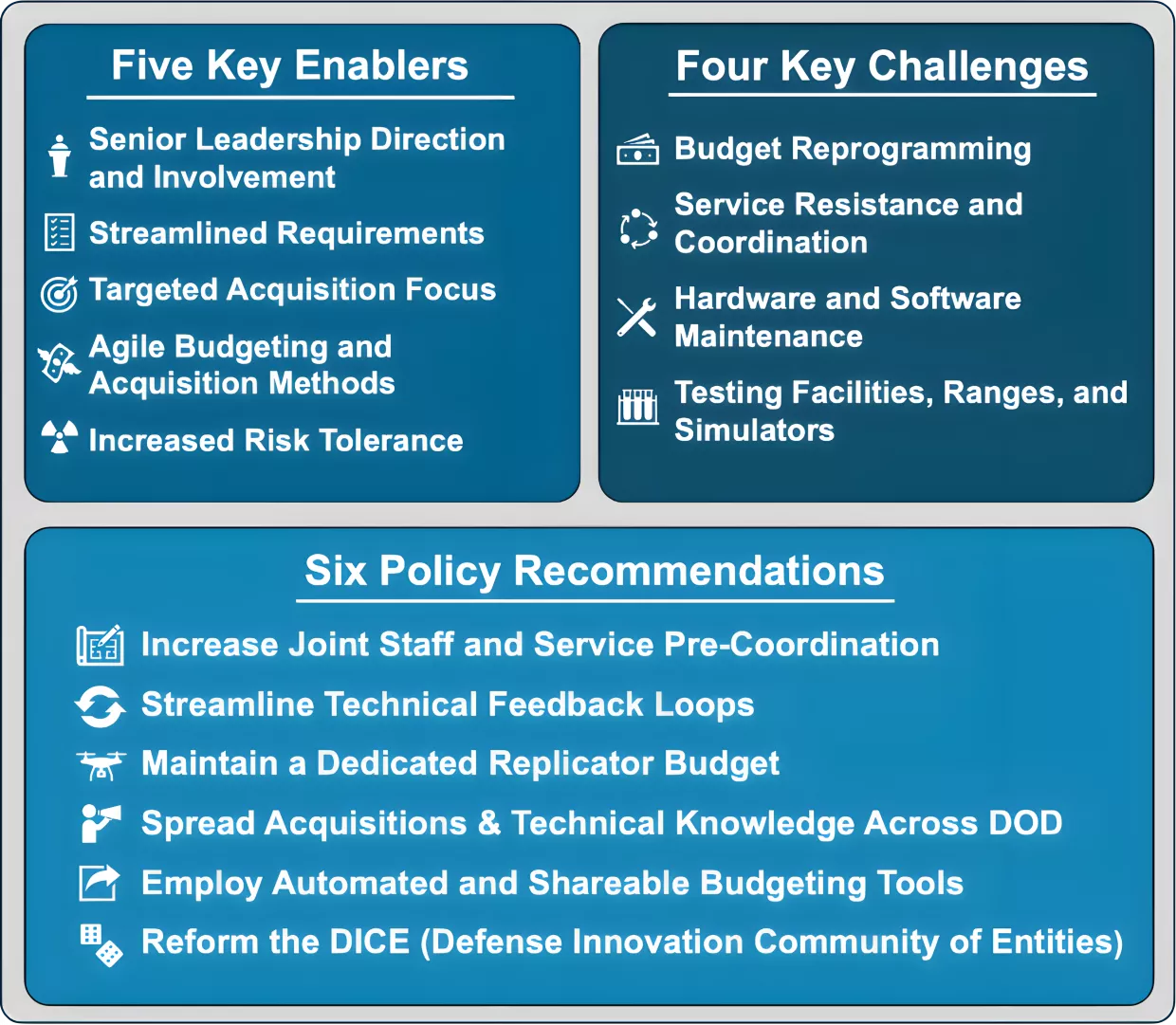Is Replicator Replicable?
Assessing the Defense Innovation Unit's Ability to Transform U.S. Military Capability in an Era of Strategic Competition
Assessing the Defense Innovation Unit's Ability to Transform U.S. Military Capability in an Era of Strategic Competition
In the current era of strategic competition, maintaining military advantage requires the U.S. Department of Defense (DOD) to employ unmanned and autonomous systems in the land, air, sea, and space domains to perform reconnaissance, logistics, and strike operations. All-domain unmanned systems (UxS) paired with autonomous capabilities function as a force multiplier, enhancing the effectiveness and strength of manned military forces while reducing the risk to personnel. Keeping pace with autonomous UxS technological advancement requires the acceleration of historically slow and complex DOD acquisition processes. Failure to do so risks the U.S. military’s ability to deter, fight, and win.
The Defense Innovation Unit’s (DIU) Replicator Initiative represents the DOD’s latest significant effort to leverage the innovation and manufacturing capabilities of domestic private industry to accelerate the delivery of cutting-edge technologies to the warfighter. Announced in August 2023, the first iteration of Replicator, named Replicator 1, aims to deliver all-domain attritable autonomous (ADA2) systems to warfighters at a scale of “multiple thousands” within 24 months. Achieving this goal requires significant collaboration between DOD, Congressional, and private industry stakeholders to overcome technical, budgetary, and institutional hurdles.
The dual nature of Replicator’s goal is implied in its name: to use innovative and replicable processes to rapidly procure systems capable of replicating the warfighter’s capabilities in the field. The initiative’s ability to deliver on these goals has shown early promise, with DIU reporting that it is on track to deliver the planned quantity of ADA2 systems as of August 2025. It remains to be seen, however, if the processes used to achieve its quantitative goal of procured systems are sustainable and repeatable.
In an era of great power competition, the employment of unmanned systems has become a critical strategic capability. However, rapid defense acquisition and employment of UxS requires overcoming two primary internal challenges.
The purpose of this report is to identify and discuss key challenges and enablers to Replicator’s success in accelerating the acquisition of innovative defense technologies and develop concrete recommendations for DIU to promote Replicator’s future sustainability as a reliable and repeatable process.
Through interviews with subject matter experts across Congress, DOD, industry, and academia, as well as analyses of previous rapid acquisition efforts, this report investigates how DIU can overcome bureaucratic challenges to accelerate the delivery of capable technologies to the warfighter through Replicator. While many dedicated and well-reasoned studies have addressed systemic defense acquisitions problems, this study endeavors to identify the factors that have contributed to a single program’s successes and shortcomings, adding a focused perspective in contribution to a larger ongoing discourse.
This study identifies four key challenges and five key enablers that have contributed to Replicator’s results. Analysis of these factors informs six recommendations for DIU to implement in future Replicator iterations, which may also have applicability to the greater DOD and innovation bureaucracy. These findings are displayed below:

Haley, Richard, Michael Harteveldt and Ethan Kessler. “Is Replicator Replicable?.” September 25, 2025